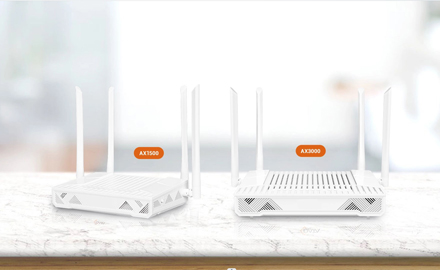OLT (Optical Line Terminal) and switch are two different networking devices that serve distinct purposes, especially in the context of telecommunications and networking. Let's discuss each one separately:
1. OLT (Optical Line Terminal):
- Function: OLT is a key component in a Passive Optical Network (PON). It is responsible for converting electrical signals into optical signals for transmission over fiber optic cables to Optical Network Units (ONUs) or Optical Network Terminals (ONTs) at the customer's premises.
- Role in PON: In a PON architecture, multiple ONUs or ONTs are connected to a single OLT. The OLT manages and controls the communication between the central office and the end-user devices.
- Example Application: OLTs are commonly used in Fiber-to-the-Home (FTTH) networks, where they play a crucial role in delivering high-speed broadband services over fiber optics.
2. Switch:
- Function: A switch is a device that operates at the data link layer (Layer 2) of the OSI model. It is used to connect devices within a local area network (LAN) and makes forwarding decisions based on MAC addresses.
- Role in LANs: Switches are integral components of LANs and are used to create networks by connecting multiple devices such as computers, printers, and servers. Unlike hubs, which broadcast data to all devices in a network, switches use MAC addresses to forward data only to the specific device for which it is intended.
- Example Application: Ethernet switches are commonly used in office and home networks to facilitate communication between devices within the same LAN.
Key Differences:
1. Scope of Operation:
- OLT: Primarily used in telecommunications and broadband networks, especially in the context of fiber optic-based services like FTTH.
- Switch: Used in local area networks (LANs) to connect devices such as computers and printers.
2. Layer of Operation:
- OLT: Operates at a higher layer (typically Layer 3) and is involved in managing and controlling communication between the central office and end-user devices.
- Switch: Operates at Layer 2, making forwarding decisions based on MAC addresses.
3. Media Type:
- OLT: Typically associated with fiber optic cables in PON architectures.
- Switch: Can work with various media types, including twisted pair cables (Ethernet).
In summary, OLT and switch are designed for different purposes within networking. OLTs are crucial in delivering high-speed broadband services over fiber optics, especially in PON architectures, while switches are fundamental components in LANs, facilitating communication between devices within the same network.
 The Difference Between AX1800 ONU and AX3000 ONU
The Difference Between AX1800 ONU and AX3000 ONU
 How are Huawei OLTs Classified?
How are Huawei OLTs Classified?
 The Future Trend of Optical Line Terminals (OLTs)
The Future Trend of Optical Line Terminals (OLTs)
 The Difference Between ONU and ONT
The Difference Between ONU and ONT